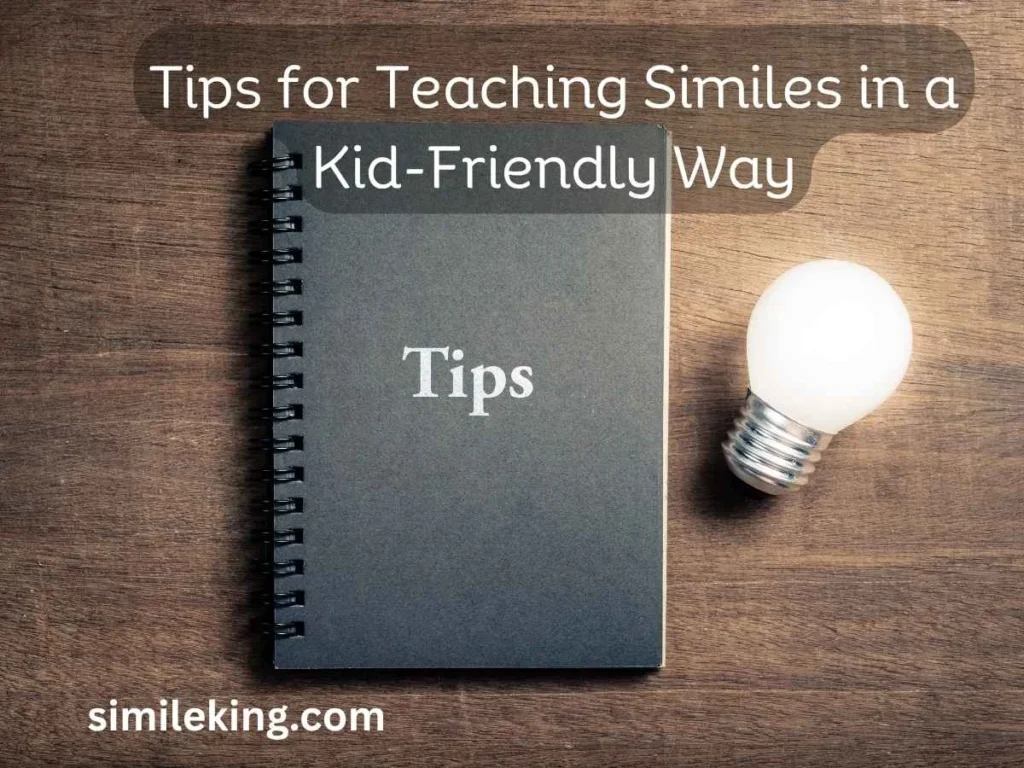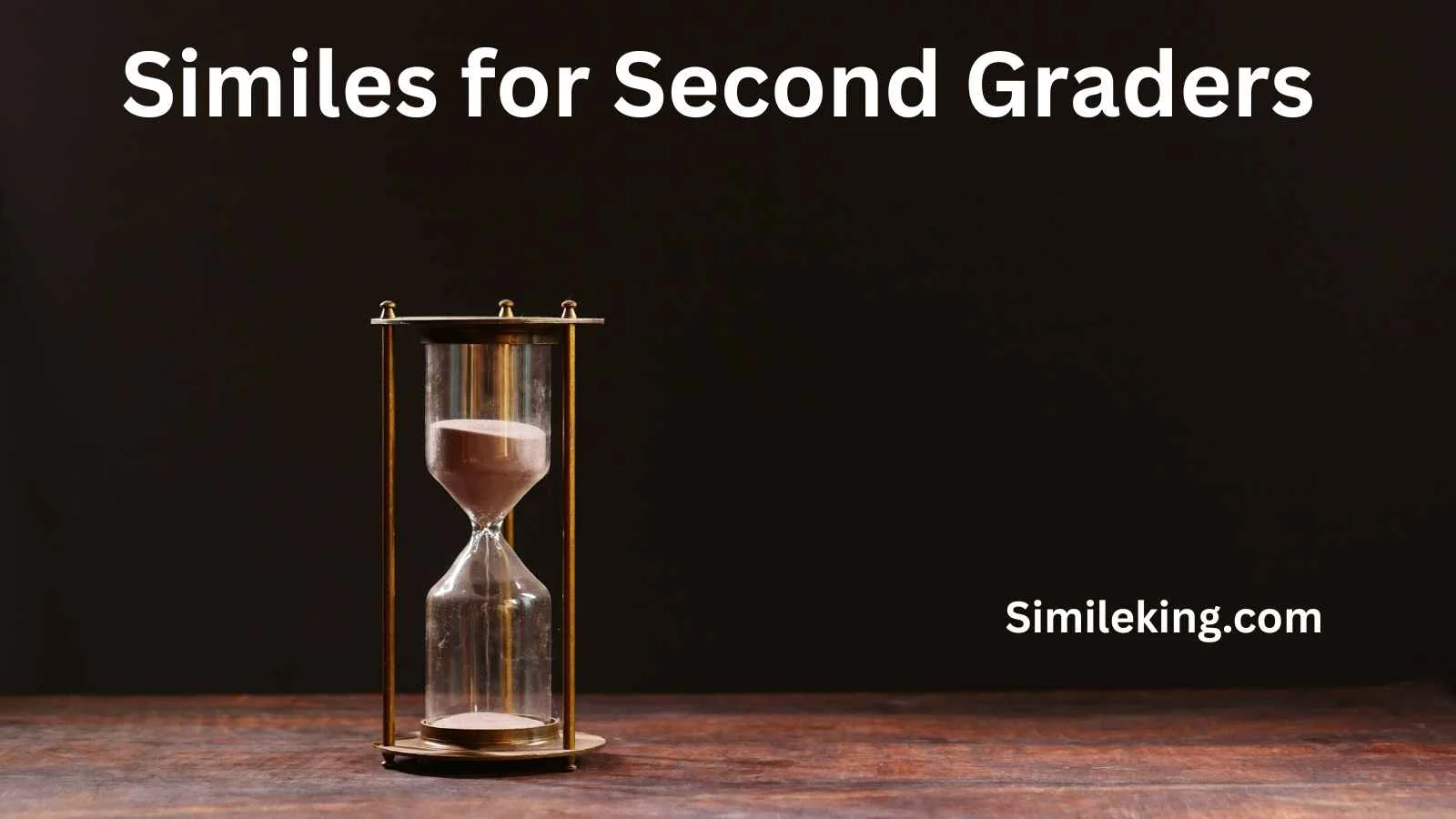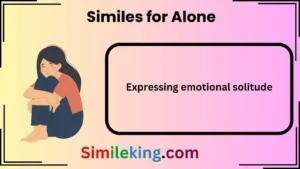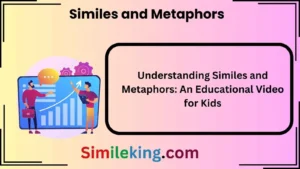Similes are powerful tools that help children bring imagination to life through language. Especially for second graders, learning similes can make writing more colorful, relatable, and fun. Whether it’s describing a sunny day, a playful pet, or a fast runner, similes allow children to compare things using vivid, understandable imagery.
This article will explore 20+ similes ideal for second graders, focusing on age-appropriate, easy-to-understand, and fun-to-use comparisons. You’ll also learn how to adjust tone—whether casual or formal—and find five optimized texting examples perfect for digital learning environments or parent-child interaction.
What Is a Simile?
A simile is a figure of speech that compares two different things using the words “like” or “as.”
For example:
- “He is as fast as a cheetah.”
- “She sings like a bird.”
This helps second graders paint a clearer picture in their minds and makes writing or storytelling more exciting.
Why Teach Similes to Second Graders?
Children at the second-grade level are developing critical thinking and language skills. Similes support:
- Vocabulary expansion
- Creative expression
- Reading comprehension
- Storytelling confidence
By offering fun and relatable comparisons, similes enhance a child’s ability to connect emotions, actions, and ideas with the world around them.
Tips for Teaching Similes in a Kid-Friendly Way

Here are simple strategies for introducing similes to second graders:
1. Use relatable objects
Stick with things they encounter often, like animals, toys, nature, or everyday activities.
2. Keep it simple
Use only one idea per simile and ensure it’s short and concrete.
3. Encourage creativity
Let children invent their own similes and use drawings to explain them.
4. Include games
Play matching or fill-in-the-blank games using simile pairs.
20+ Similes for Second Graders with Examples and Tone
Each of the following similes is crafted to be age-appropriate, creative, and easy to use. The tone varies from friendly to expressive, depending on the scenario.
1. As fast as a cheetah
Tone: Energetic
Example: “She ran across the field as fast as a cheetah!”
2. As quiet as a mouse
Tone: Polite, peaceful
Example: “He tiptoed into the room as quiet as a mouse.”
3. As bright as the sun
Tone: Cheerful
Example: “Her smile was as bright as the sun.”
4. As slow as a turtle
Tone: Funny or playful
Example: “He walks to class as slow as a turtle.”
5. As fluffy as a cloud
Tone: Gentle, descriptive
Example: “The kitten’s fur was as fluffy as a cloud.”
6. As loud as thunder
Tone: Dramatic
Example: “Their laughter was as loud as thunder!”
7. As sweet as candy

Tone: Affectionate
Example: “You’re as sweet as candy!”
8. As strong as an elephant
Tone: Empowering
Example: “He lifted the box like he was as strong as an elephant.”
9. As cold as ice
Tone: Descriptive
Example: “The water was as cold as ice!”
10. As happy as a puppy
Tone: Joyful
Example: “She was as happy as a puppy with a new toy.”
11. As soft as a pillow
Tone: Comforting
Example: “The teddy bear is as soft as a pillow.”
12. As shiny as a star
Tone: Magical
Example: “Her bracelet was as shiny as a star.”
13. As sneaky as a cat
Tone: Humorous
Example: “He was as sneaky as a cat stealing cookies.”
14. As busy as a bee
Tone: Active, hardworking
Example: “I was as busy as a bee with my school project.”
15. As playful as a puppy
Tone: Energetic
Example: “They were as playful as puppies on the playground.”
16. As big as a whale

Tone: Exaggerated (fun for storytelling)
Example: “That pumpkin is as big as a whale!”
17. As cool as a cucumber
Tone: Calm
Example: “Even in front of the class, he was as cool as a cucumber.”
18. As tall as a giraffe
Tone: Fun, descriptive
Example: “My big brother is as tall as a giraffe.”
19. As bouncy as a ball
Tone: Kinetic and vivid
Example: “She’s as bouncy as a ball after lunch.”
20. As colorful as a rainbow
Tone: Visual and creative
Example: “Her dress was as colorful as a rainbow.”
21. As silly as a clown
Tone: Playful
Example: “They were as silly as clowns at recess!”
How to Choose the Best Simile for Your Situation
Casual Tone:
Use fun, light similes like “as silly as a clown” or “as playful as a puppy” during storytime or in friendly chats.
Professional Tone (for teachers or formal writing):
Use more descriptive or metaphorically rich similes like “as quiet as a mouse” or “as bright as the sun.”
Polite or Encouraging Tone:
Choose expressions like “as sweet as candy” or “as soft as a pillow” when giving compliments or writing greeting cards.
5 Optimized Texting Examples for Google
Here are five user-friendly and SEO-optimized examples ideal for articles, messaging apps, or educational chats:
- You’re as fast as a cheetah! 🐆 Great job in the race today.
- My blanket is as soft as a cloud—perfect for nap time! ☁️
- He was as sneaky as a cat when he stole the last cookie. 🐱🍪
- Your smile is as bright as the sun—it made my day! ☀️😊
- She was as happy as a puppy when she saw the birthday cake. 🎂🐶
These examples are designed to rank well on Google by including clear structure, emojis for engagement, and relatable scenarios for second graders and parents.
Activity Ideas to Reinforce Similes for Second Graders
- Draw the Simile:
Ask students to draw their favorite simile—like a cheetah running or a cloud pillow. - Simile Matching Game:
Match phrases like “as cold as…” with “ice,” “snow,” or “a freezer.” - Simile Story Challenge:
Have students write a 5-sentence story using at least two similes from the list. - Classroom Simile Wall:
Create a poster wall where students can add their own new similes throughout the week. - Simile Charades:
Act out similes (e.g., someone acting “as slow as a turtle”) while classmates guess.
Frequently Asked Questions
Q: Are similes and metaphors the same?
A: Not exactly. Similes use “like” or “as” to compare, while metaphors say something is something else (e.g., “The classroom was a zoo.”)
Q: Can similes help my child with reading?
A: Yes! Similes improve comprehension by creating vivid mental images, making reading more engaging and easier to understand.
Q: Should I correct my child’s simile if it sounds strange?
A: Not right away. Encourage creativity first, then gently offer guidance on making comparisons clearer.
Conclusion
Similes open a magical world of imagination for second graders. With a toolkit of fun comparisons like “as fast as a cheetah” or “as fluffy as a cloud,” children can turn simple sentences into expressive works of language. Whether you’re a teacher, parent, or language learner, these 20+ similes give you age-appropriate, polite, casual, and even professional tones to explore.
Use these similes in daily conversation, stories, writing prompts, and creative play—and watch language skills grow with joy and confidence.





